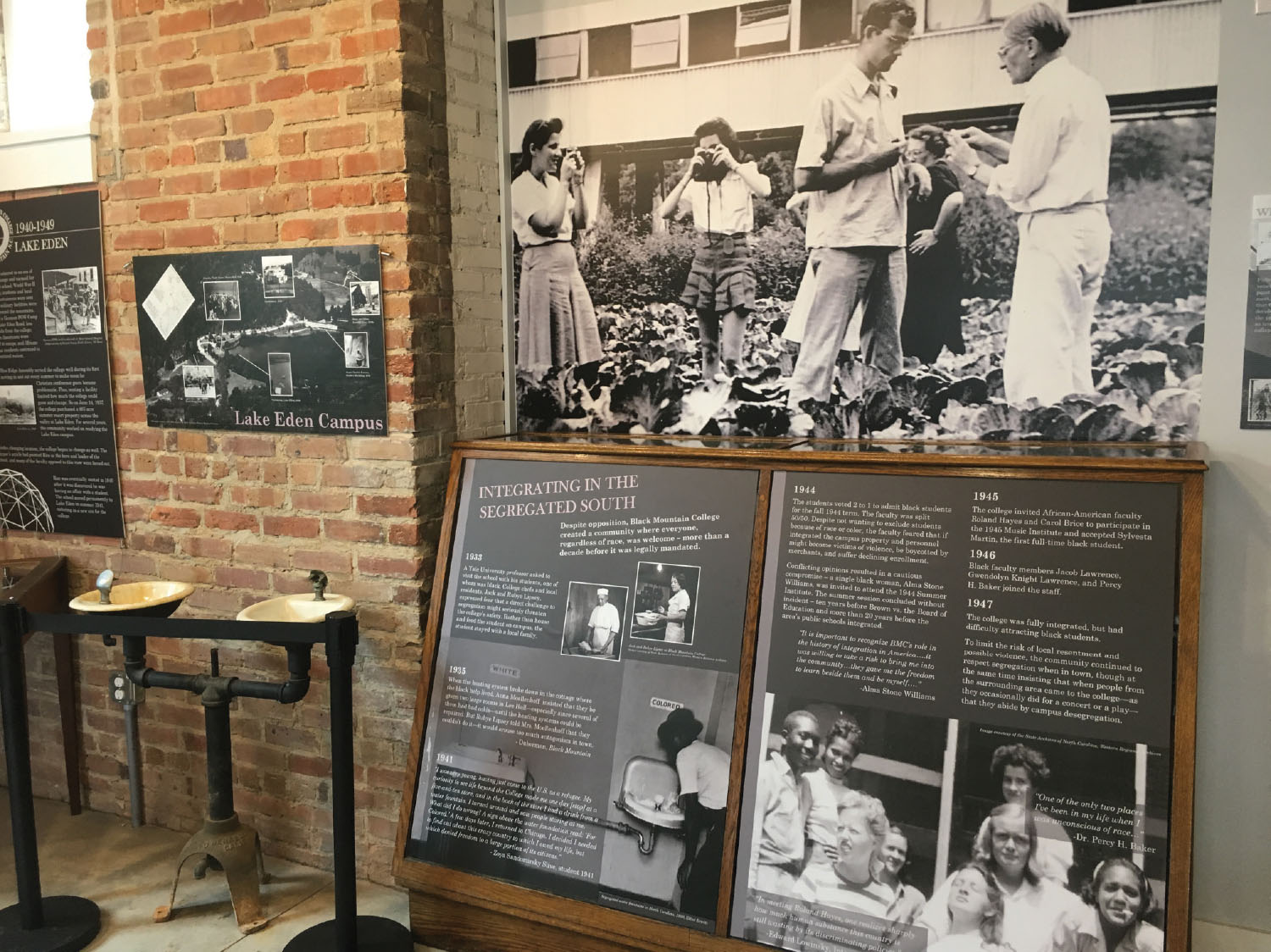
The legacy of Black Mountain College isn’t going anywhere. The avant-garde institution, which thrived in its namesake town from 1933 to 1957 and turned out some of the 20th century’s most important thinkers and doers, lives on through Black Mountain College Museum + Arts Center in Asheville and its many annual exhibits and events.
But an unaffiliated show at the Swannanoa Valley Museum & History Center this fall considers the college from a previously little-explored angle. “A myth has long persisted … that the school was isolated and had little to no interaction with the surrounding communities of Asheville, Swannanoa, and Black Mountain,” says the museum’s executive director, Anne Chesky Smith, in a press statement.
In fact, numerous anecdotes of sometimes funny, sometimes uncomfortable townie-meets-student interactions survive, among them the time a local resident found a dirty, wild-haired man panning for gold in a local creek (it was no less than visiting instructor Albert Einstein). Black Mountain College: Where “Town” Meets “Gown,” a joint exhibit with Appalachian State University, is a series of panel displays and photographs surrounding a model of the geodesic dome, brainchild of BMC inventor/teacher Buckminster Fuller. The visuals prove that the lofty school had way more connection with its then-isolated Blue Ridge environs than was previously thought.
The exhibit also explores the Midcentury issue of racial integration, a topic that initially divided the school, even as it increasingly gained a reputation for intellectual enlightenment. Finally, in 1944, Black Mountain College admitted African-American music scholar Alma Stone Williams to a summer program. Next came instructors Roland Hayes, painter Jacob Lawrence and his wife Gwendolyn Knight Lawrence, and Dr. Percy H. Baker — all a decade before the official start of the Civil Rights movement.
“Despite this progressive attitude, however, few African-American students would choose to attend Black Mountain College, perhaps one of the many factors that contributed to low enrollment and indebtedness in the late ’40s and early ’50s that eventually led the school to close its doors in 1957,” Chesky Smith writes in her piece “Integration at BMC.” She adds: “Despite its short history, Black Mountain College remains an inspiration for progressive education and art around the world.”
— M.J. MacAodh
Black Mountain College and Black Mountain, NC: Where “Town” Meets “Gown” runs through Saturday, Dec. 8, 10am-5pm, Tuesday-Saturday at Swannanoa Valley Museum, 223 West State St., Black Mountain. www.swannanoavalleymuseum.org. 828-669-9566.